Nutanix NCM-MCI-5.15 Nutanix Certified Master – Multicloud Infrastructure (NCM-MCI) 5.15 Online Training
Nutanix NCM-MCI-5.15 Online Training
The questions for NCM-MCI-5.15 were last updated at Dec 18,2025.
- Exam Code: NCM-MCI-5.15
- Exam Name: Nutanix Certified Master - Multicloud Infrastructure (NCM-MCI) 5.15
- Certification Provider: Nutanix
- Latest update: Dec 18,2025
An administrator of a Nutanix Enterprise Cloud has microsegmentation enabled and a firewall VM installed. The security team notifies the administrator that one of the VMs hosted in the environment has been exhibiting suspect network activity. The administrator wants to isolate the VM from the production network, but must still be able to access it to perform diagnostics.
What should the administrator do to meet the requirement?
- A . Disable the vNIC on the affected VM
- B . Quarantine the VM using the Forensic Method
- C . Create a firewall rule that blocks VM traffic but permits diagnostic access
- D . Create a security policy with a service chain directing that VMs traffic to the firewall VM
D
Explanation:
Ref https://portal.nutanix.com/page/documents/kbs/details?targetId=kA00e000000LIelCAG
An administrator migrates a VM onto a new Nutanix cluster. After the migration, the administrator observes the following conditions:
• Cluster memory utilization: 64%
• Cluster CPU utilization: 19%
• Cluster storage utilization: 32%
• Average VM CPU utilization: 25%
• Average VM CPU ready%: 24%
• Average VM memory utilization: 60%
Which two changes should the administrator make to improve VM performance? (Choose two.)
- A . Add more memory to the VMs.
- B . Reduce the number of vCPUs assigned to VMs.
- C . Replace high core count CPUs with high clock rate CPUs. (also can be but is physical invas)
- D . Reduce the number of VMs on the hosts.
B D
Explanation:
ref http://www.joshodgers.com/tag/cpu-ready/
An administrator is supporting a business critical environment and deploys metro availability to achieve a zero data loss configuration. The two clusters are connected by a 1GbE connection. A new workload is going to be deployed to this cluster. This workload requires a sustained 150MB/S of write throughput and 20MB/s of read throughput.
Which change must be made to deploy the workload successfully on this cluster?
- A . The bandwidth must be increased to support this workload.
- B . The workload must be configured to read at greater than 12.5MB/S.
- C . The replication frequency must be less than 60 minutes.
- D . Zero data loss nearsync must be used to support this workload.
A
Explanation:
Ref:
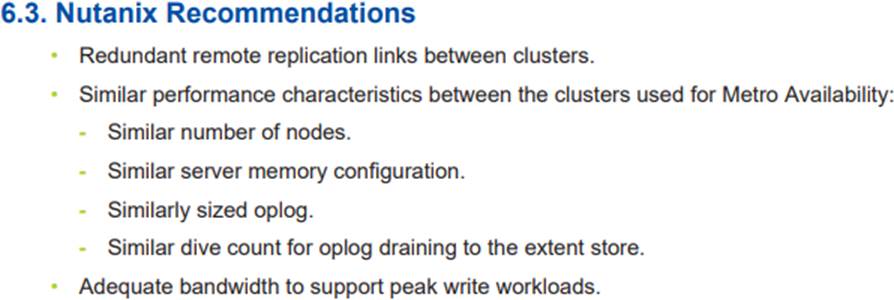
A systems administrator needs to add more VMs to their Nutanix cluster.
Which two actions should the administrator perform to determine if the current cluster can accommodate the new VMs? (Choose two.)
- A . Perform an Inventory with Life Cycle Management.
- B . Determine utilization with Cluster Runway.
- C . Enable Deduplication and Erasure Coding.
- D . Utilize Optimize Resources for VM efficiency.
B D
Explanation:
Ref:
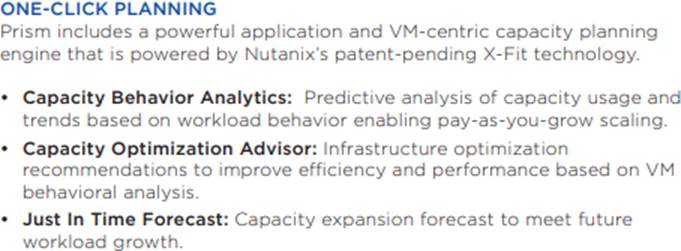
A guest VM is reported to have poor storage performance. It has an I/O profile of 80% read. 20% write, and the HDDs form more than 50% of the read source.
What should an administrator do to resolve this issue?
- A . Increase SSD capacity
- B . Increase the OPLOG
- C . Increase the write cache
- D . Use HDDs with higher RPM
A
Explanation:
Ref: https://portal.nutanix.com/page/documents/solutions/details?targetId=BP-2126-SAS-on-Nutanix:BP-2126-SAS-on-Nutanix
An administrator receives an alert in Prism indicating that interface eth2, on an AHV host is receiving many CRC errors.
After togging into the problematic host, the following command is run to show the indicated output:
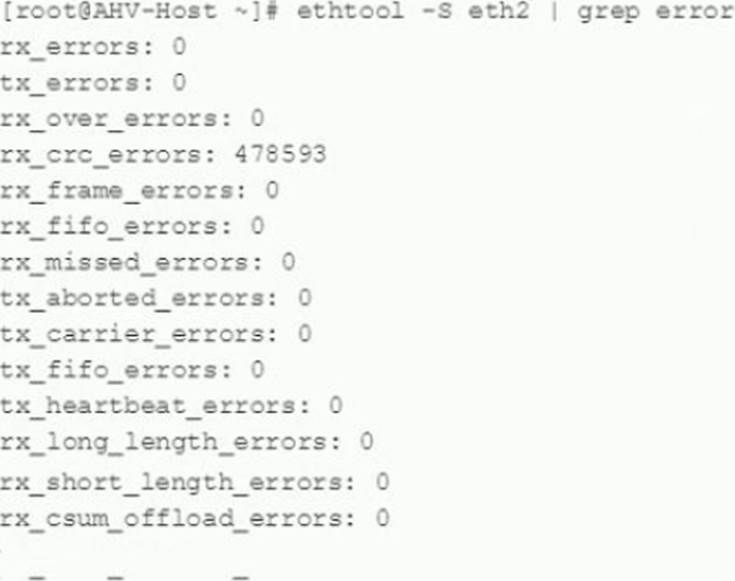
What is causing this issue?
- A . Incorrect link speeds on the switch
- B . The interface is incorrectly configured with Jumbo Frames
- C . A misconfigured bond
- D . A physical layer network problem
B
Explanation:
Ref:
rx_crc_errors are caused either by faults in layer 1 (in the past, we have seen failed twinax cables and incorrect types of fibre being used), or issues with jumbo frames on the network. In an environment with 10 Gig switches that use cut-through forwarding (Cisco Nexus, Arista, Cisco devices using IOS default to Store and Forward switching), any packets that come into the switch will get forwarded out the destination interface once the switch has read the destination MAC address. If that packet has an MTU over what is configured on the interface, it will cut off the packet at the designated MTU, causing the server to receive a malformed packet, which will throw a CRC error.
If you have a layer 1 issue, you will see rx_crc_errors, not on all but one or two nodes.
An administrator deletes a large amount of data from a Volume Group presented to a Linux VM. The administrator notices that the deleted data has not been reclaimed as usable storage.
What action should be taken to reclaim the storage capacity?
- A . Shrink the Volume Group that is associated with the Linux VM
- B . Unmount the Volume Group and then Remount the Volume Group
- C . Enable the unman operation on the Linux VM
- D . Run Defrag on the Linux VM
B
Explanation:
https://next.nutanix.com/how-it-works-22/vm-capacity-and-prism-capacity-are-different-33134
A customer has two mission-critical applications and needs to have them backed up to a remote location. The remote location is connected using a leased line and has an average latency of 7 ms.
Which Nutanix technology will provide the shortest RPO possible?
- A . NearSync
- B . Leap
- C . Metro Availability
- D . Asyn&DR
A
Explanation:
Ref: https://portal.nutanix.com/page/documents/solutions/details?targetId=BP-2005_Data_Protection:BP-2005_Data_Protection
An administrator needs to deploy an application with a large amount of data connected via Nutanix Volumes.
Which two actions should the administrator take when designing the Volume Group? (Choose two.)
- A . Use multiple subnets for iSCSI traffic
- B . Enable RSS (Receive Side Scaling)
- C . Enable thick provisioning on the Volume Group(s)
- D . Distribute workload across multiple virtual disks
B D
Explanation:
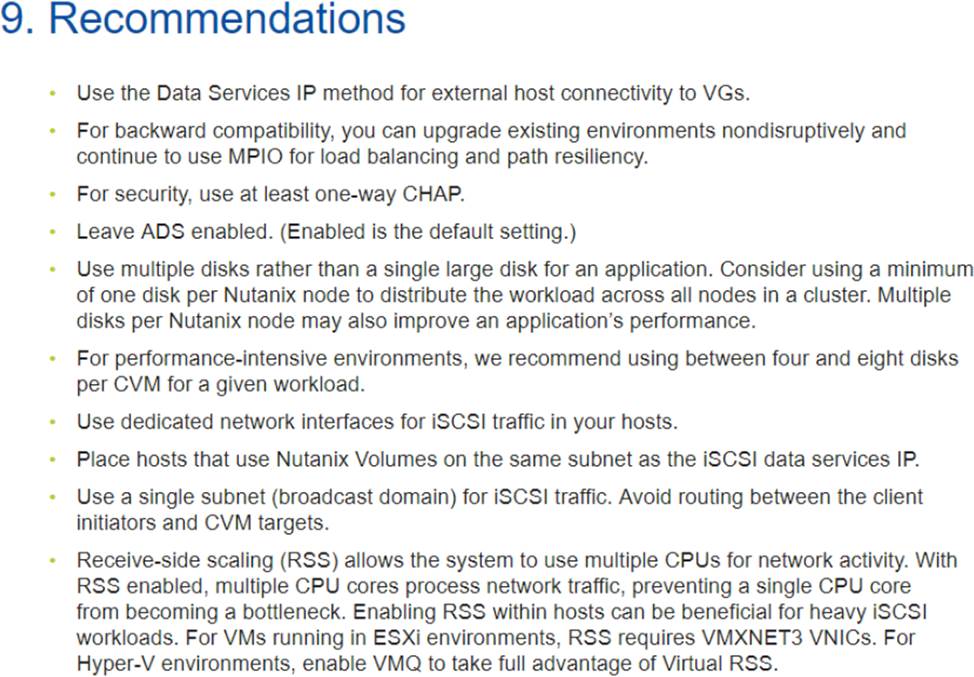
Microsegmentation was recently enabled in a Nutanix environment. The administrator wants to leverage Prism Central to create a policy that will block all traffic, regardless of direction, between two groups of VMs identified by their category.
Which policy should be used to meet this requirement?
- A . A Quarantine Policy
- B . An Isolation Environment Policy
- C . An Application Security Policy
- D . A Whitehst-Based Policy
B
Explanation:
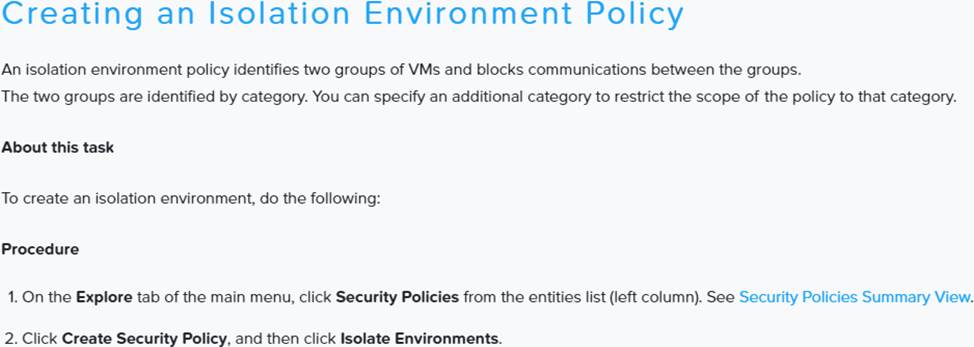
Latest NCM-MCI-5.15 Dumps Valid Version with 107 Q&As
Latest And Valid Q&A | Instant Download | Once Fail, Full Refund

